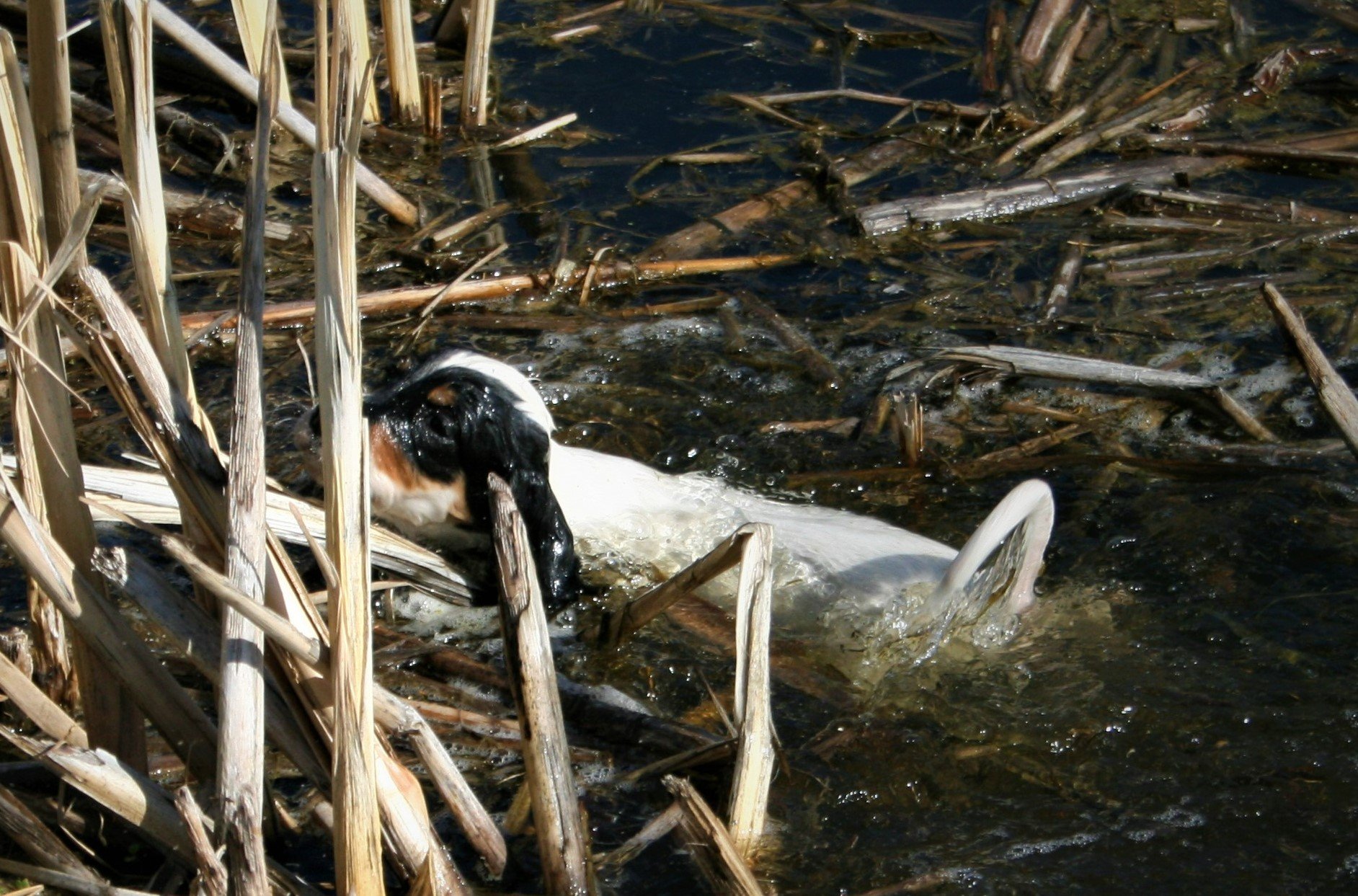In For the Swim!
Summer’s long – hot – days, have arrived here at the Setter Ranch. The sweltering heat can be unbearable, at times. Running dogs earlier in the day is required. Thanks to the higher elevations behind us, thermal breezes carry cooler (heavier) air down-slope that often allows for a brief run at dusk. During the heat of the day, dogs could huddle indoors around the air conditioner but, to stay in shape, an enjoyably refreshing dip in the pool (or other nearby body of water) does a dog good!
Creek or pond - water is all part of a pup’s life.
Here, again, there are countless methods of training dogs to enjoy water. Small – noninflatable - plastic kiddie pools and the use of treats, toys, or you, the owner, as “bait” all have their advocates. I prefer that the dog learns to enjoy working for pleasure – not filling its face – and, if you’ve ever had a dog swim up to you, you may bare the scars of that event. Word of warning, dogs must keep paddling with their front paws and can’t help but rake you with claws when they reach you!
“So, that leaves toys, right?!” you’re thinking. Well, perhaps, but there are a couple aces you can pull from your sleave. One, there is the dog’s inherent prey drive and, two, there is competition or the desire for inclusion. If your dog is nuts about a certain retrieving object, all the easier. As with any learned skill, the more enjoyable the experience and the sooner it can be appropriately introduced, the easier and more “solid” the training. Another ingredient is one of those hot days we were chatting about.
Puppies can learn to enjoy a refreshing wade in the kiddie pool and children that appear to be enjoying themselves are an excellent draw. We have never had a young pup not eventually join in the fun of splashing in the wading pool. During romps in the field, I introduce them to creeks and puddles they must cross to keep step. Encouraged, not coddled, they will soon learn not to give such barriers a second glance.
For an older pup or dog, we gather a retrieving bumper, a leash and another dog that loves to water retrieve for a brief exercise period. Next, we head to the pond and leash the student to a stake within sight of the activity before excitedly sending the experienced water retriever for a few reps. The combination of being left out and wanting to get at the tossed object (bumper) has always been effective. You can up the excitement level by wading in the water yourself.
Loads of prey drive and early introduction makes water retrieving exciting!
This setter, Gus, swims as smooth as an alligator - even with a boat bumper!
Switch dogs and, quickly as possible, excite the learner with the bumper. New dog adequately pumped-up, give the bumper a short toss into the water – maybe chest-deep water for the dog. If your dog will whoa or remain in sit position – and, it should – have it stay on the bank while you wade a bit to toss the bumper. I find that sending the dog from a (short) distance into a relatively steep bank of water works the best. The dog gets a slight running start and, believing it must beat you and the other dog to the object, the excitement and momentum seem to have them over-look the fact that they had to swim a bit. Keep encouraging the dog while backing up onto the bank to finish the retrieve.
Now, you might not believe this, but not all dogs swim alike. No, indeed! I have learned that some swim as smooth as gators while others thrash like a churning paddlewheel! Some paddlewheel dogs relax a bit with experience and some just like to keep their head as high as possible. Dakota has greatly improved his water retrieve.
In contrasting style - choppin’ water like mad - Dakota prefers his head above water!
Dakota gladly took his turn water retrieving while Gus, (background), looks on.
Up Next: Critters Dogs May Encounter: Porcupines






